I’ve been doing family history research for 20 years and, like everyone, I’ve encountered a few brick walls. Although I have been successful in breaking most of those down using solid research techniques, one or two remain. One in particular has haunted me for more than a decade – the parents of one of my 3rd great grandparents. Unable to locate this information I have had to leave this branch of my tree undeveloped.
After years of research I have collected a good deal of information on this family, but several details of my 3rd great grandfather’s life have eluded me. Because he was Romanichal and he and his family traveled widely around the U.S. after immigrating from England, I have faced increased difficulty locating certain documents I needed. My inability to locate this information has left me in the dark about this important part of my family’s history, and I had honestly begun to wonder if the record I needed existed at all.
Please note that we have partnered with MyHeritage and that we may receive compensation if you decide to use their site. This helps us support our site, while providing you with useful and honest information you can use to build your family tree.
That’s why, when I took it upon myself to understand the updated Discoveries tool from MyHeritage (which can be accessed for 14 days free by signing up here). I wasn’t overly hopeful about the potential results. I had not used MyHeritage extensively before and expected, at best, to spend a large amount of time learning this new system and, at worst, to uncover only repeats of the records I had already added to my tree.
However, it took less than 10 minutes from the time I uploaded my family tree to make a discovery that allowed me to solve this family mystery and for all. The “record match” button on this ancestor’s profile page (which uses the MyHeritage Discoveries tool) pulled up his death certificate – a record I have been unable to locate in the past and that provided critical information about my 3rd great grandfather’s life and death, including his parents’ names.
Within an hour, I had discovered several more fascinating records that I had not seen in the past. Talk about productive research. Honestly, I am always extremely cautious when utilizing these types of matching algorithms, but when used correctly and with careful verification they can be a huge help.
The process of finding this information was a lot simpler than I expected. Below, I have outlined how I went about it and how you can take advantage of a MyHeritage free trial to explore this helpful research tool without upfront cost. The free trial does require a credit card to sign up, but since the subscription price for MyHeritage is so reasonable you might find that it is worth it to you. You can also cancel, of course, before you are charged.
First, we should discuss briefly what the Discoveries tool is. If you are familiar with Ancestry’s “Hints” feature, you could compare it to that – a feature that automatically searches for records related to people in your family tree to save you time and help you overcome research hurdles.
However, it became clear to me very quickly that the MyHeritage Discoveries tool was quite different, both in the way that it searched for records and the way it delivers them. This is a good thing, because it means new records are revealed even if you’ve done years of research. MyHeritage pulls records from many collections Ancestry does not and they are a great compliment to eachother.
If You’d Like to Give This Tool a Try, Here’s How to Do It
Step 1 – Gain Access to MyHeritage’s Family Tree and Records
To give the MyHeritage Discoveries a try there are just a few simple steps you need to follow. First, head over to this link and sign up for the 14 day free trial period (the link will open in a new tab or window so you can keep this how-to open.)
This will give you access to everything MyHeritage has to offer, including a downloadable and online family tree, 7.2 billion records and all of their tools. MyHeritage is a paid subscription site, but their monthly fees are very reasonable when compared to some other leading services. So, if you decide to keep using the service after 14 days we think you’ll be pleasantly surprised by the price.
Once you have completed sign up, you should be automatically taken to your new “family site” – as they call it. If you are not sent directly there simply visit the MyHeritage site and login or follow the link they send you in email. Of course, if you already have a MyHeritage complete subscription, there is no need to complete this step.
Step 2 – Upload Your Family Tree
MyHeritage makes it very easy to upload a current tree to your site. If you do not already have a tree developed, or prefer to manually enter just some information into their system, then you can build a tree from scratch as well.
To upload your tree you will need a GEDCOM file. This is the standard file format for family tree information transfer. We downloaded ours from Ancestry for this purpose, but you can export a GEDCOM from any family tree program. This is generally found under File > Export.
On Ancestry, this option can be found by selecting Trees from the menu in a family tree, selecting Manage Trees, clicking on Manage Tree under the tree you want to export and looking for the green Export button in the right sidebar. We have an article dedicated to how to do this here if you would like a walk though.
Please note that exporting a GEDCOM does not export records as well. But it does export citations for all of your sources.
Once you have a GEDCOM file on your computer, look for the Family Tree rollover in the MyHeritage menu. Roll over it and select Import GEDCOM.
You will be taken to a screen where you can upload your GEDCOM file. When the upload is complete (this takes less than a couple of minutes in most cases) you will be given a message telling you that your tree is processing. An email will be sent when it is ready. For us, this happened almost immediately. Follow the email link to your family tree or find it by rolling over Family Tree in the menu again and selecting Manage Trees. Select your new tree to see how it looks.
Step 4 – Set Your Privacy Level
This is a good time to set your privacy level for your new tree. Click on your name in the upper right hand corner and select Privacy. Then look through the privacy options presented. Here you can control access to who sees your tree, whether you want to allow MyHeritage to share your tree in their searchable trees collection and other options.
You can choose to select the Smart Matches box under “Content” to see Smart Match Discoveries, which come from other people’s trees (different from Record Discoveries) but you do not need to allow inclusion of your tree in “MyHeritage historical search engines” if you do not feel comfortable with others having access to your family tree information via search.
Step 4 – Make Some New Discoveries
Once you review your tree to make sure it looks accurate and set your privacy level you can jump right into Discoveries. To do this simply roll over Discoveries in the menu bar.
You will see that you have three options, the first is Matches by People. This will show you a list of discoveries by individuals in your tree. The second option, Matches by Source sorts these discoveries by the source they come from – such as the 1910 US Census.
The third option, Instant Discoveries, is not something we will be covering here since it would require an article by itself – but it is a tool that allows you to add family tree data to your own tree in batches. We caution you to be very careful with features that allow you to copy and paste information from other trees without very carefully examining each added person and detail. You can read more about why we think this is something to be very cautious with here. This advice also applies to adding records to your tree before you are sure that they are an accurate addition.
We found the Matches by People to be most intuitive. Click on this option. You will now be presented with a number of new discoveries, sorted by individual. You can choose to view all matches, or just Record or Smart Matches. Smart Matches will match you with other family trees, Record Matches will match you with records from the MyHeritage (and partner) collections. Here’s what it looks like.
You can also search for a specific person using the provided search function.
Once you have found an ancestor that you would like to review, simply select “Review Matches” and you will be brought to a screen where you can review all matches and choose which ones to delete or review. When you review a match you will be brought to a page where you can review the information with any transcribed information and the original record displayed in full. I really like how the actual record is presented here for review before you are asked to add it, or information from it, to your tree.
You can click on a record to view it full size and can easily download it to your computer, which is always recommended. Use the arrow button on top to download to your computer.
If you decide that this information should be added to your individual, simply Confirm Match and you will be taken to a page where you can “extract” information from this record directly to your tree while adding the record and citation.
I did find that many of the Discoveries came from otherwise free sources on the internet, such as FamilySearch Trees and the US Census. One of my major discoveries after I uploaded my tree was the record shown above for Joseph Mayo, another 3rd great grandfather. This record actually came from the Chronicling American collection which we have covered extensively here.
It is a free collection and, had I ever looked in this database specifically for Joseph I may have discovered it on my own. However, we all know that one of the greatest challenges of family history research is time. Although I have used Chronicling America many times with great success, I do not have the time to search for every single one of my research targets there. MyHeritage’s Discoveries engine did some of the work for me – connecting me with a record I had no idea existed. In this way the Discoveries tool acts a powerful search partner for free and paid resources.
So what about the record that broke down my brick wall…
As mentioned, you can also view these record discoveries directly from the profile page of any person in your tree, a very convenient feature. It was in this way that I discovered the record that broke down by decade old brick wall – a 1912 Saint Louis, Missouri Certificate of Death that never came up in my research before. It was contained in the Missouri Death Certificates collection 1910-1960.
Of course, if I had known that my grandfather lived in Missouri I would have sought out this collection earlier and searched for his death (it is also available online through the Missouri Digital Heritage site) – but I did not. He traveled so often, and I had so little information about him and his spouse, that this location did not occur to me. But, despite my lack of information on my ancestor, MyHeritage turned up this important record.
This illustrates the importance of having access to great tools in addition to great collections if you want to solve your own family mysteries. In this case, it was the Discoveries tool that helped me make this breakthrough. Although the record itself can be found online for free, who knows how long it would have been before I discovered it on my own.
If you’re ready to give these Discoveries a try for yourself you can sign up for a 14 day free trial here.
By Melanie Mayo, Family History Daily Editor

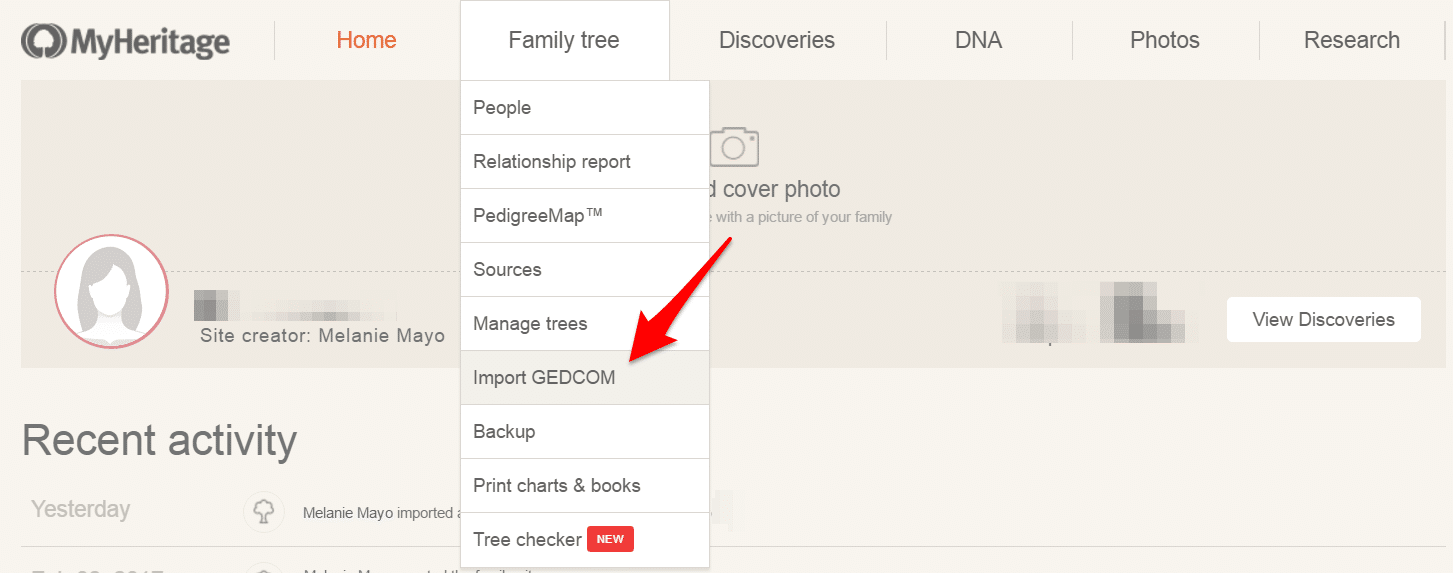
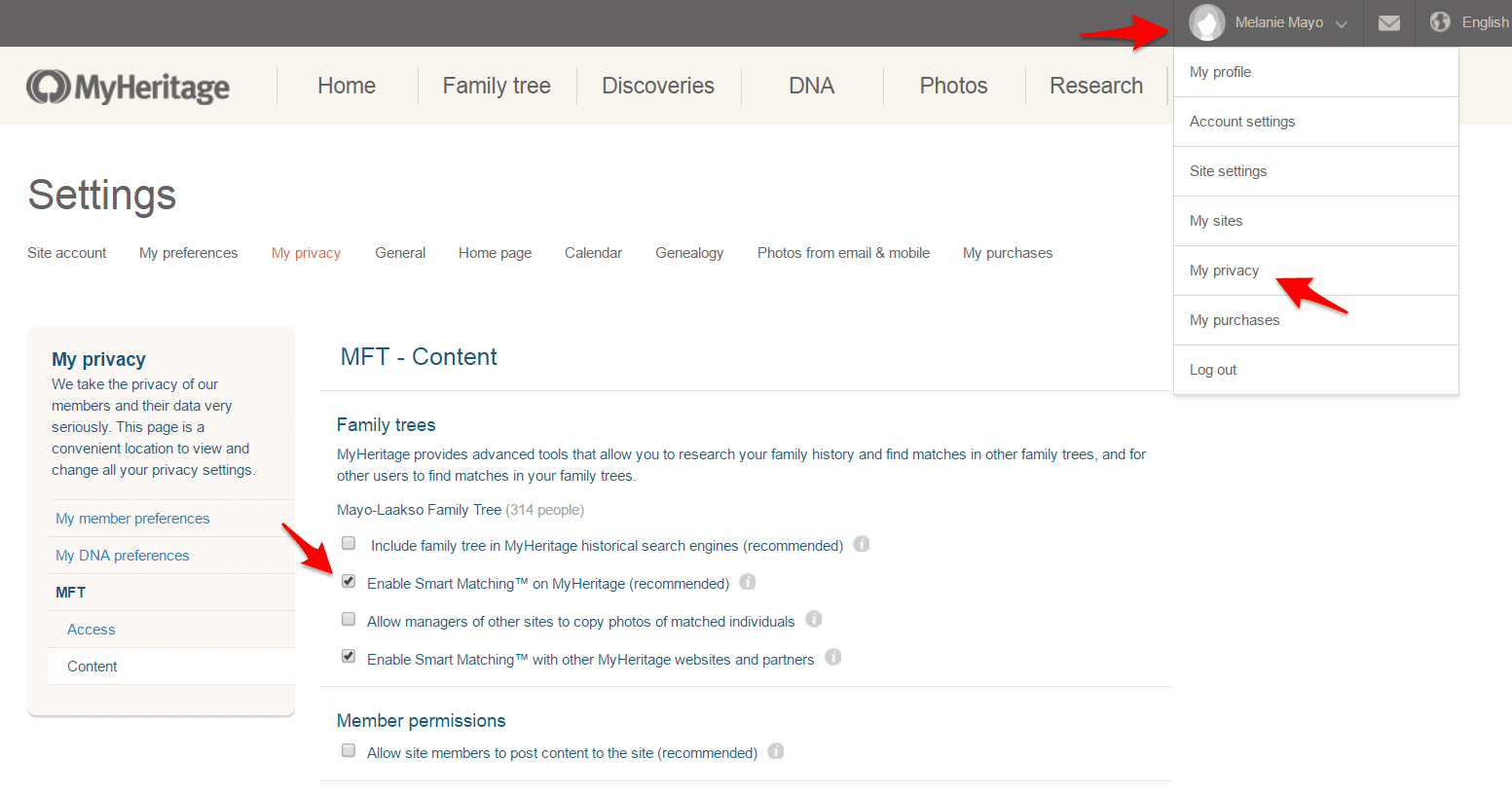

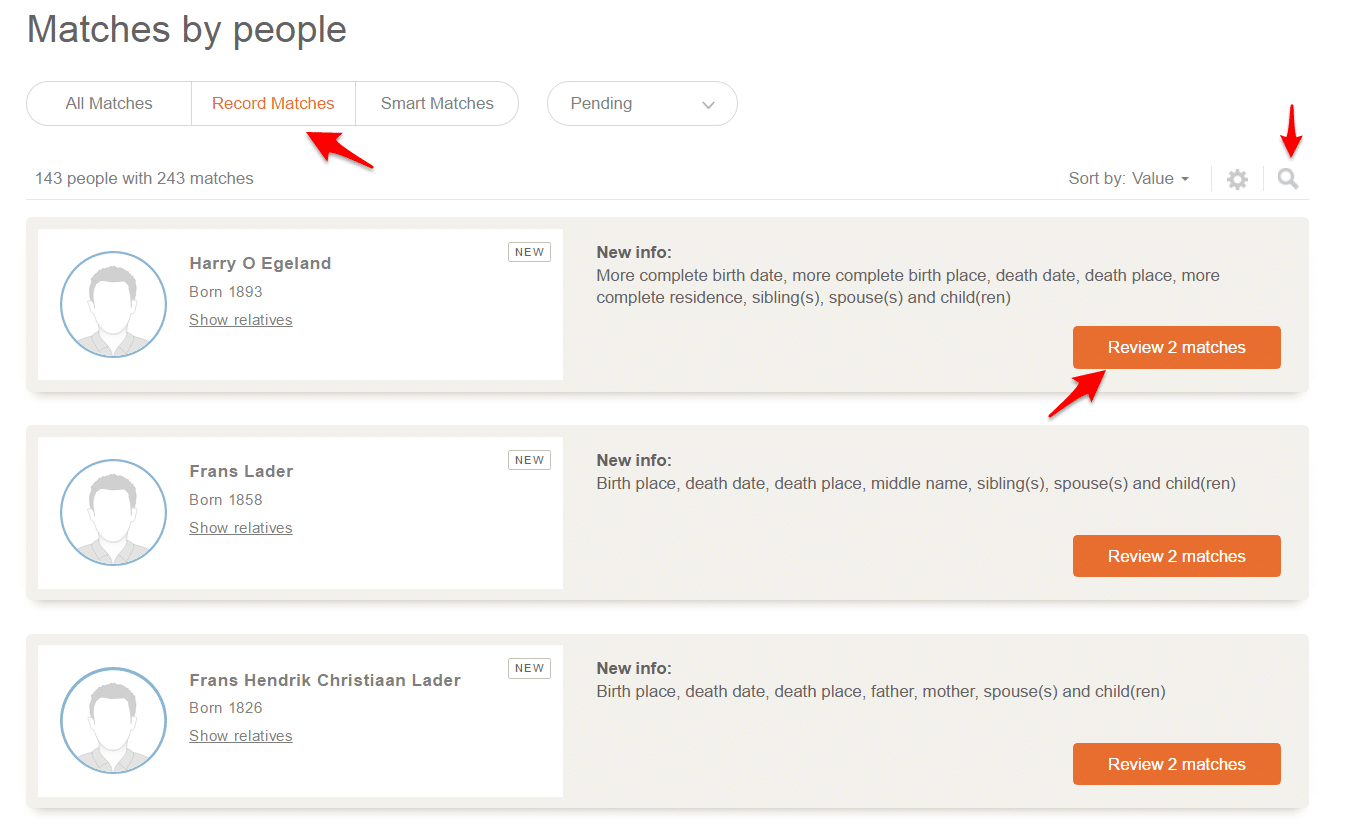
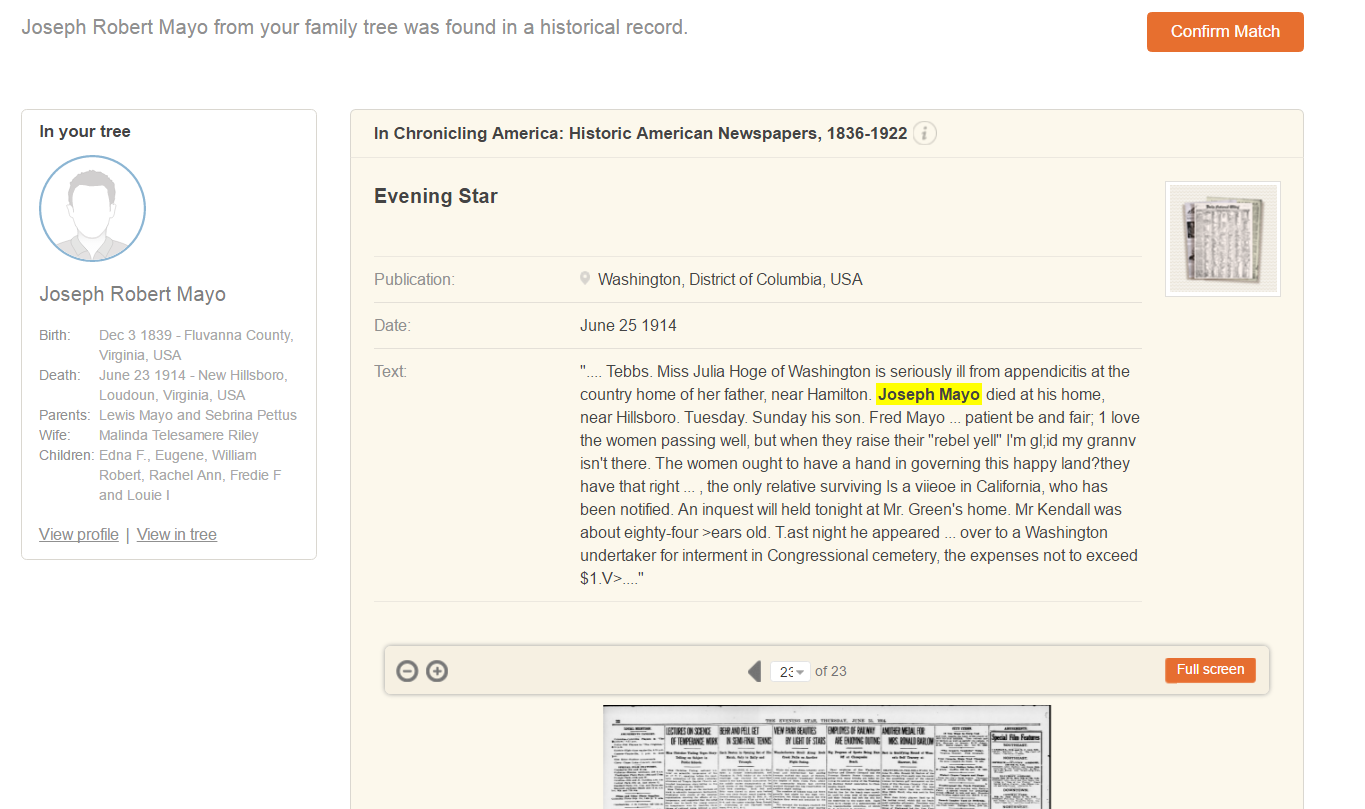
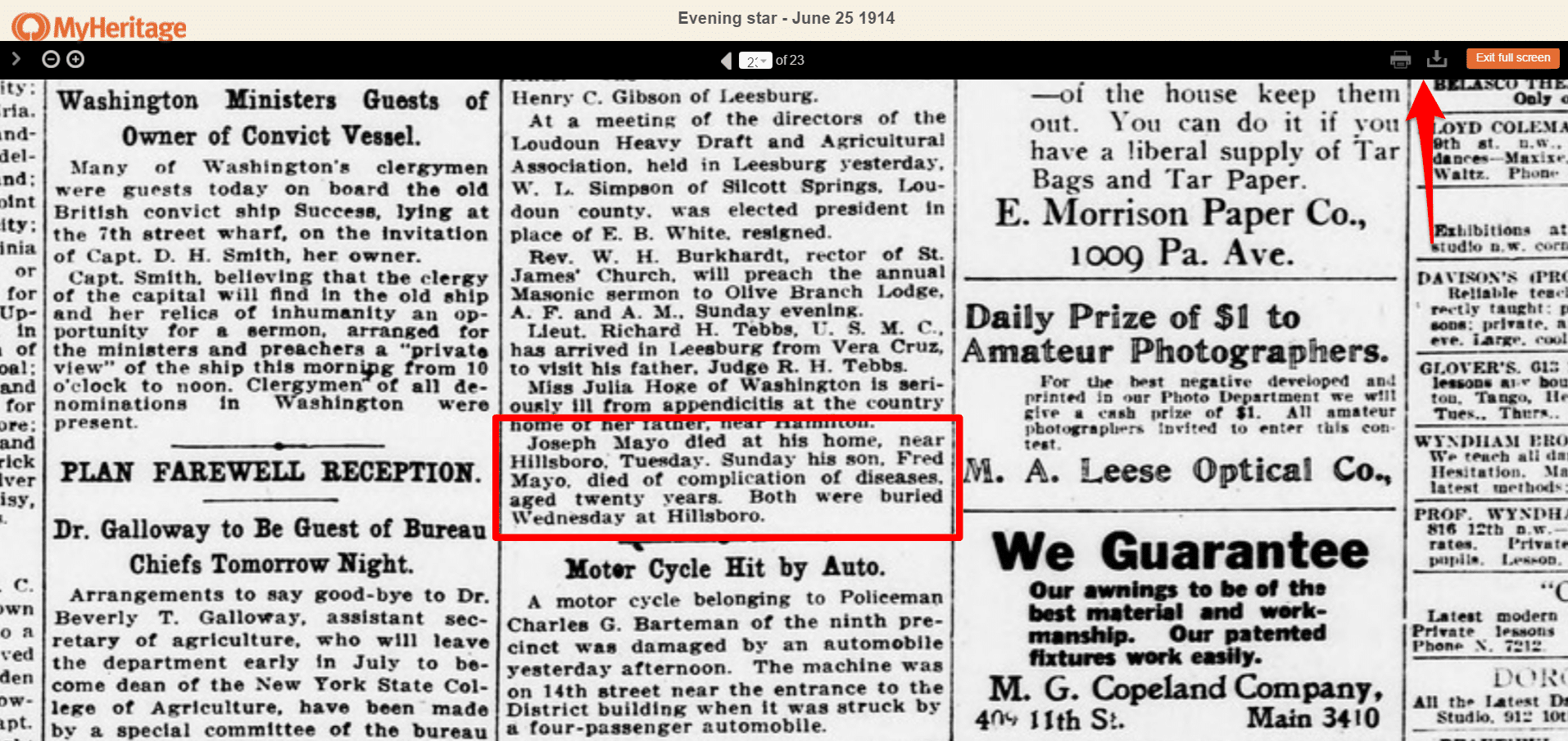
I am a member of My Heritage already, so your suggestions about breaking down a wall for my 3rd great-grandfather (my situation is similar to what you described) won’t help me.
In general, I like My Heritage’s features including the Discoveries. However, there is one drawback that I think readers should be aware of. When a “Discovery” comes up, you only see information about the main relative, not about all the other ones that accompany the main relative (there are usually several others. When you add the Discovery, it’s add all the relatives or none). Though I always look over what information there is and I do NOT add a Discovery if something important doesn’t match, even then I frequently find issues with the other relatives later on–duplicates, mistakes, dates that don’t make sense (like a child being born to a mother who is 70). Once they are all on my tree, the only thing I can do is go through each new one, check the information, then delete or edit, which can be tedious.
Remember that Discoveries, just like family trees that you add or copy from any other source, are not infallible.
Again, I’m 4 years late! Was just wishing for a German speaker two days ago. Germany is always interesting/occasionally frustrating because it seems the lines are drawn and redrawn so often. But it’s fun for this research nerd :0)
I loved FamilySearch for so long, but there’s no oversight there at all, a lot of wonderful people who did this before the internet existed, all the things that make it possible for people like me to do a lot of this from home have left. It’s heartbreaking to lose those older people. So I spend more time at Ancestry and Wiki Tree. I’ve no idea how I’ll pay for it when the gift of a year subscription my Dad gave me for Christmas, to build trees, but mostly to work as quickly as possible saving memories for my precious Mom. She was dx’d with Alzheimer’s in her 60s. Every time I find something about her Grandfather at Ancestry, my heart just sings. So I’m trying to do as much as I can as fast as I can, while still reading every Census, I love the City Directories too. Great documents there.
Every one of you who is generous, who shares photos and your time …. you may not know it now, but you’re a blessing. You’re also helping to save history! That’s a pretty cool legacy.
Remember that GEDCOM also will not move your photos and sources. You’ll still need to go back and add those in.
I’ve ended up doing all of it manually, and I have a few thousand people at Ancestry (I’m always asked what computer program I use 🙂 Pretty much the “I’m disabled with time on my hands and I type very fast” program). It helps me remember when I write it, and on shared trees, people aren’t following me to correct bad info about a shared ancestor.
I thought I finally found a question I wasn’t four years too late to respond to. Maybe this will help someone though – the part about making sure you’ve moved/copied (we should say that, “moved a copy” also, as I’m sure you -Tara – are not alone in asking about this) your photos and sources to the newer site. I hope it all went really well!
I took a discounted one year subscription to My Heritage (a 50% discount offered at an expo, which I had to fight for). I never got around to using the Discoveries function because I found their site very difficult to work with. I developed a whole page of questions and objections, but found their customer service via phone or e-mail to be atrocious, either not getting a response or only 4-5 days later. For example, I found their tree layout to be unwieldy compared to Ancestry, which also offers much better customer service. I’m glad you cautioned the use of Instant Discoveries, which are an absolute disaster. Smart Matches to me were “dumb matches” providing mostly uncorroborated information from member family trees. I found out that one person I supposedly matched up with was nothing but a name collector; I never could find out where we were related.
After that one year elapsed, I decided to try again because of their supposedly superior German records, but cancelled when I could not get a response from them. Based on your article, I’m tempted to try again, but would only want to do that for the 14 day free trial.
I don’t know if you can answer this: since I already have my tree on their site and have been a previous subscriber, would I still qualify for the 14 day free trial?
Yes, it is still available on Ancestry. You would be downloading the Gedcom file of your tree, it doesn’t remove the tree from your Ancestry account, it merely downloads a copy of the tree, which you can then upload or transfer as you see fit.
If I export my tree from Ancestry to My Heritage, it’s still on Ancestry right? I want to use multiple sites, but don’t wan to lose all the info on my Ancestry tree.
I do have a subscription to My Heritage and have really under used it. One area that has
amazed me are the number of German ancestors I have found. A whole slew of generations on my
maternal great grandmother’s side.
I did upload my Gedcom from Ancestry and as I recall, the photos did not upload. One question I
would like answered: I have add a good number of new family members to my Ancestry tree and would like to
find a simple way to add them to the My Heritage Tree. Is there a way to do this? Thank you!
Yes, it took a just short time for the discoveries to start showing initially after the tree upload. Also, make sure your settings are marked to allow matches, as described in the article. Enjoy!
I did this and had no matches. Does it take time for it to come up with matches? I have a large and extensive family tree.
Thanks!
Anisah
Hi Sarah,
Thanks for the great question. The record was a 1912 death certificate from Missouri and is part of the Missouri Death Certificate collection. I have updated the article to make his more clear.
Hi Toni,
The price of the subscription is stated in the final signup page before you agree to the 14 day free trial, so there are no surprises.
Hope that helps,
Melanie
I’m wondering why this article does not state from what state/city the death record was from. Was there a particular database where this information was found that can’t be found elsewhere? Or was it something another researcher had posted to the site?
“So, if you decide to keep using the service after 14 days we think you’ll be pleasantly surprised by the price.”
Which you will find out AFTER you sign up.
This is a great question Mary, I apologize that it was not made clear in the article.
A citation in a family tree shows where information for a certain fact was gathered from – its source. For instance, a birth date and location might have been pulled from a birth certificate and the citation would be information about that certificate and where the certificate was found.
When you export a GEDCOM file (a family tree file) the citations, or information about sources, are usually maintained. However, the actual records attached to that citation, such as a scanned copy of the birth certificate that is attached to the citation, are not maintained.
For this reason if you export a GEDCOM from your family tree software or from another site, like Ancestry, and upload it to MyHeritage (or somewhere else) you and others will be able to see the citation – where you got the information from originally – but will not have access to the records themselves.
I hope this helps clear things up.
Thank you Rick for your service. I am sure that your donations and your transcribing talents have benefited many. Sometimes this is a thankless journey. Finding those ancestors is the best reward ever. I am a paralegal. I found people using a skip tracing program. I wish they were free too. But of course, only for dead people. 🙂
Search engines such as Google, Bing and Yahoo! are valuable resources also for finding people. My friend said that she Googled a family member and got a lot of information. You can also use Wiki Tree to get a lot of information. Some said that Heritage Quest from your local library can be helpful. Yes, they have a lot of things that Ancestry has but they also have information not found on other sites. I have also used Find-a-Grave to get information. Billion Graves has not provided as much information for me but it is a place to research. Good luck y’all in the search for your ancestors and in breaking down those walls. I have more brick walls than Carter’s has pills. 🙂
Dear Editor……I am reading your interesting offer to join Heritage & its capabilities. I am fairly new at this & I am not clear what you mean regarding uploading a Gedcom to your site. You mention “it will import citations but not records. What does this mean? Thanks for your time.
I too am having trouble finding information on my father’s side of the family. My grandmother told my mom that the family name, Bell, was changed or shortened. Such as Bellair going to Bell. My great, great, grandfather, Charles Bell, was born about 1824 in French Canada. He ended up in Millbury Massachusetts. I did my DNA on another site and someone I matched with thinks our connection is through the Belliveau family. They were from Nova Scotia.
If you know where she was adopted, you can write to the county courthouse and ask for the adoption papers be opened. Write to the judge and ask. I had my adoption papers opened and got my father’s information. He left before I was born. If her birth certificate is included, you can get a lot of information from the birth certificate.
Do you know if there was even a father in the picture? Maybe she was unmarried, or a mistress. It seems odd that there is no mention of him anywhere, even in family Bibles. Seems like maybe his identity was kept secret on purpose.
I can not go any further back in my heritage on my fathers side then my grandfather, I had always heard that he had changed his name, but I can find no record of him other than his death. I am starting to wonder if the name change was even a legal one. No birth, record of name change, nothing except he is listed as my fathers father and his death. Nothing seems to help, no I don’t know what his name was before so that does not help either.
You do realize the person who so rudely responded to your question is not a representative of My Heritage? The writer of the article is Melanie Mayo, not Rachida Djebel.
The dead giveaways are the grammatical errors in the response and referring to you as Mr. Know-it-All and ignorant. Very unprofessional.
I would like to know how come living people are recorded on My Heritage. I know this is right because I was linked via my own name to My Heritage and there was my name, my children and grand child. I thought due to the privacy laws all living people should be listed as private, I found it an invasion of my privacy. Also to find out who had put these details on your site I was asked to pay to join.
I have traced my fathers side back to 1067 in England. On my mothers side, the Hooks line ends in London in 1756 – and there is NO mother listed – and his last name is different from the father listed last name. Have you ever run into this?
How do you search if your mother has been adopted ?
Your postings give a grossly distorted impression about Ancestry. Of course, ANY large set of records will contain a moderate amount of erroneous or misleading information. But people reading your postings could easily get the VERY mistaken impression that MOST of what is available on Ancestry is junk.
I’m a lawyer who did consumer debt collection for a number of years and in the early 1990’s wrote about a dozen Continuing Legal Education seminar papers (around 40-200 pages each) on “Locating Debtors and Assets”. One firm had in-house skip tracers and I learned all sorts of methods from them. So I know a LOT about research on “finding people” that VERY few people know.
And I’m still AMAZED at the INCREDIBLE amount of good information available on Ancestry–city directories that show year-by-year where ancestors lived and what type of work they did, school yearbooks, death certificates that show parents, etc. Ancestry isn’t “illegally sneaking behind governments’ back”. They are CONTRACTING with the GOVERNMENT AGENCIES to digitize, index AND make the records available.
If state or federal laws prohibit making certain records available, the states or federal agencies DON’T contract with Ancestry. For instance, The federal Drivers Privacy Protection Act, 18 U.S.C. Sec. 2721 et seq., prohibits making driver’s license information available to the general public on-line.
And I do a lot to GIVE BACK to “the community” for all the information OTHERS have contributed over the years–I scanned in about 815 pages of my junior high and high school yearbooks (the originals of which I want to keep) and uploaded them to an Ancestry tree. (I set up a small one under the high school deceased principal’s name, just to have a place to put them.) And I donated my four college yearbooks, which Ancestry had scanned and are now available.
And since I majored in German in college, I’ve been able to find and translate records that no one else for four generations has known about or been able to read–and then I posted the translations on Ancestry.
EVERY one of these MAJOR sites has SOME things NO ONE else has. Yes, there will be a lot of overlap. But they will also have material others DON’T have. Some will be different COLLECTIONS. Much of it will be different TREES.
For someone who has only been doing a little research or who only started recently AND who is mainly researching countries for which Ancestry has a lot of records, Ancestry is definitely THE way to go. But for someone who has been researching for several years, after awhile everything that shows up in hints or searches you’ve already seen. Using other MAJOR sites (e.g., Family Search) provides access to new materials.
Another thing is that people who start on a fairly large PAID site usually will stay THERE. Nobody who has uploaded 200 images wants to have to redo all of the uploading, filling in info on each image, attaching the image to individuals, etc. Unfortunately, there isn’t ANY way to take ALL the information from one site and TRANSFER it to another site–GEDCOMs don’t transfer images.
So it’s worth ONCE IN AWHILE getting a subscription to other LARGE companies just to have access for finding those “only we have it” materials.
Maybe I should have said What is it that this site has that Ancestry doesn’t already have. I mean no disrespect.
Editor’s Note: This comment has been removed due to hateful content.
What makes you think that you are better than the records on ANcestry.com I feel that maybe you both have the same records and that’s about it. Am I right? I have been struggling with a 3rd great grandfather not knowing his name at all, I have his wifes first name only and the records from Maryland to Lewis and Knox county Missouri has nothing on him at all. the family did not even mention his name on any of their obituaries or family Bibles. I have done countless hours and months and years trying to find his name without fail. It’s as if he walked off the face of the earth. SHe was on the 1840 Lewis CO. MO. Census with her four sons as the oldest son as head of household. No husband was with her. so he died between the last childs birth 1826 up to 1840. NOthing is found on him as I don’t have a first name at all.
Editor’s Note: This comment has been removed due to hateful content.